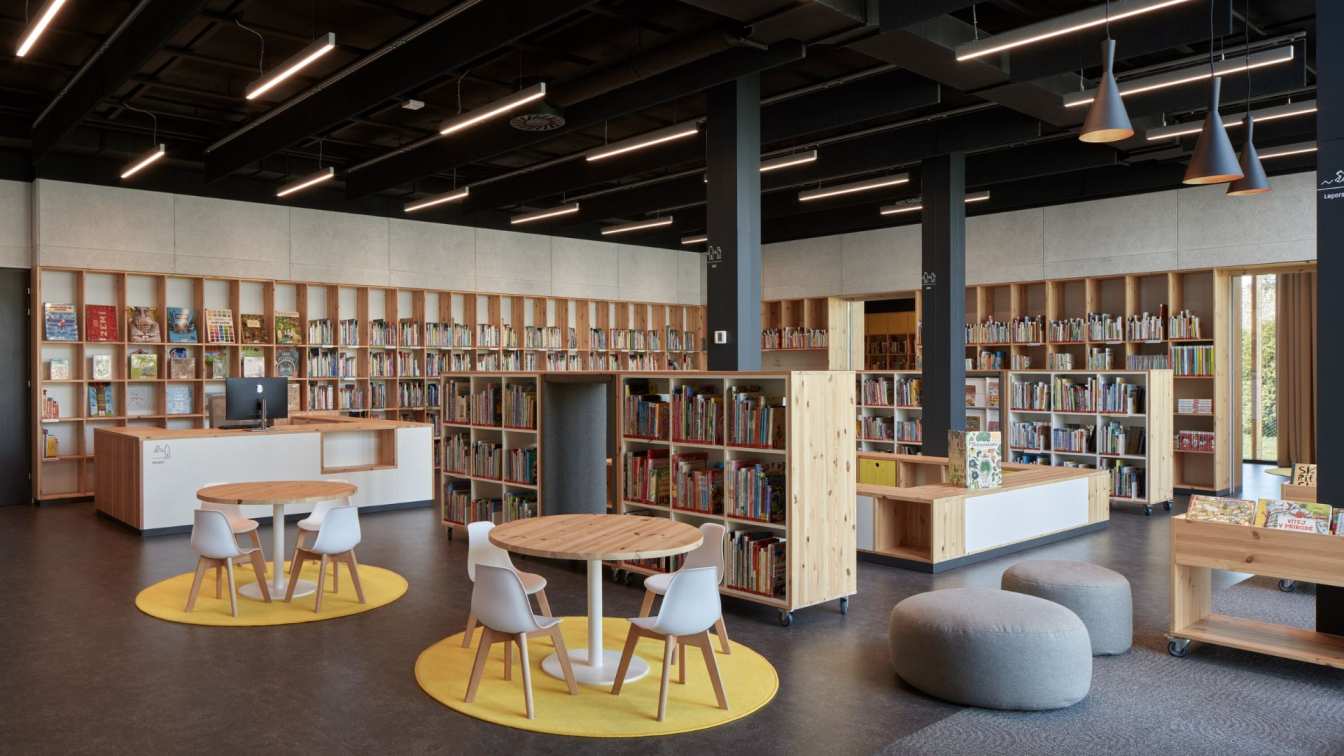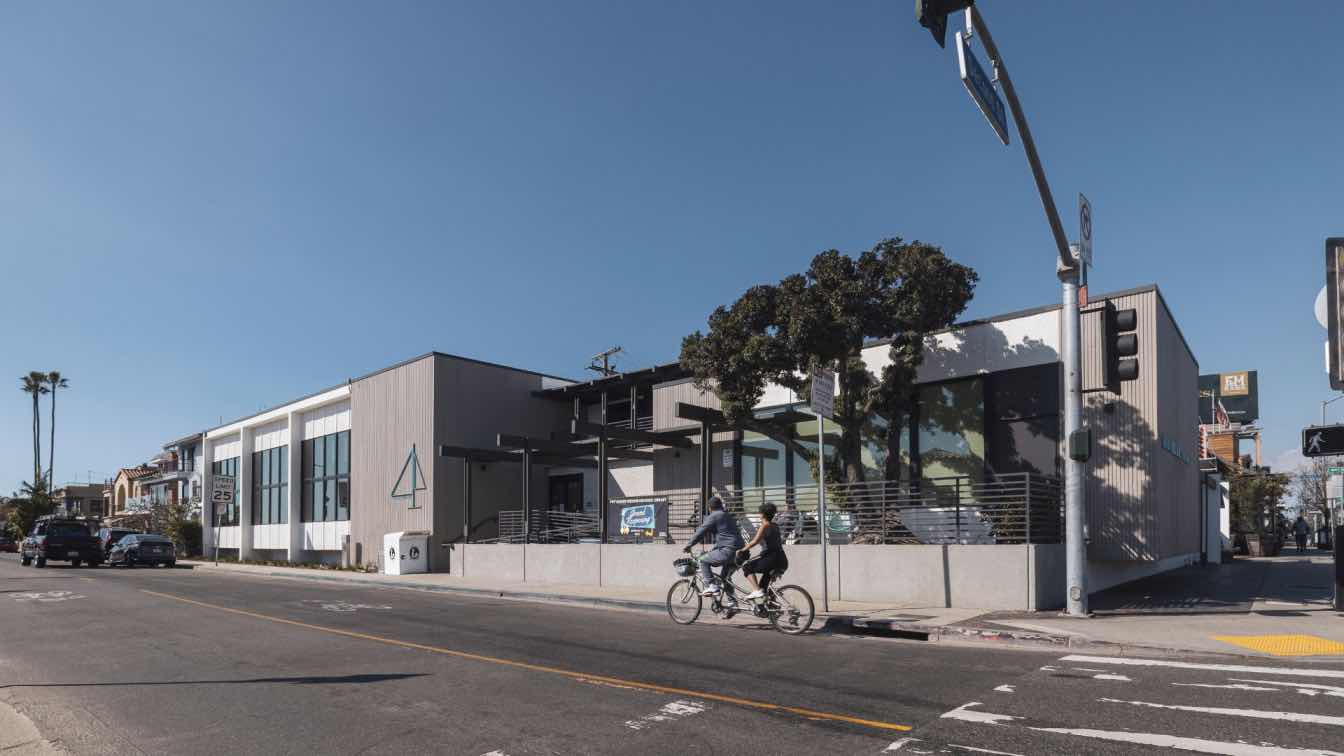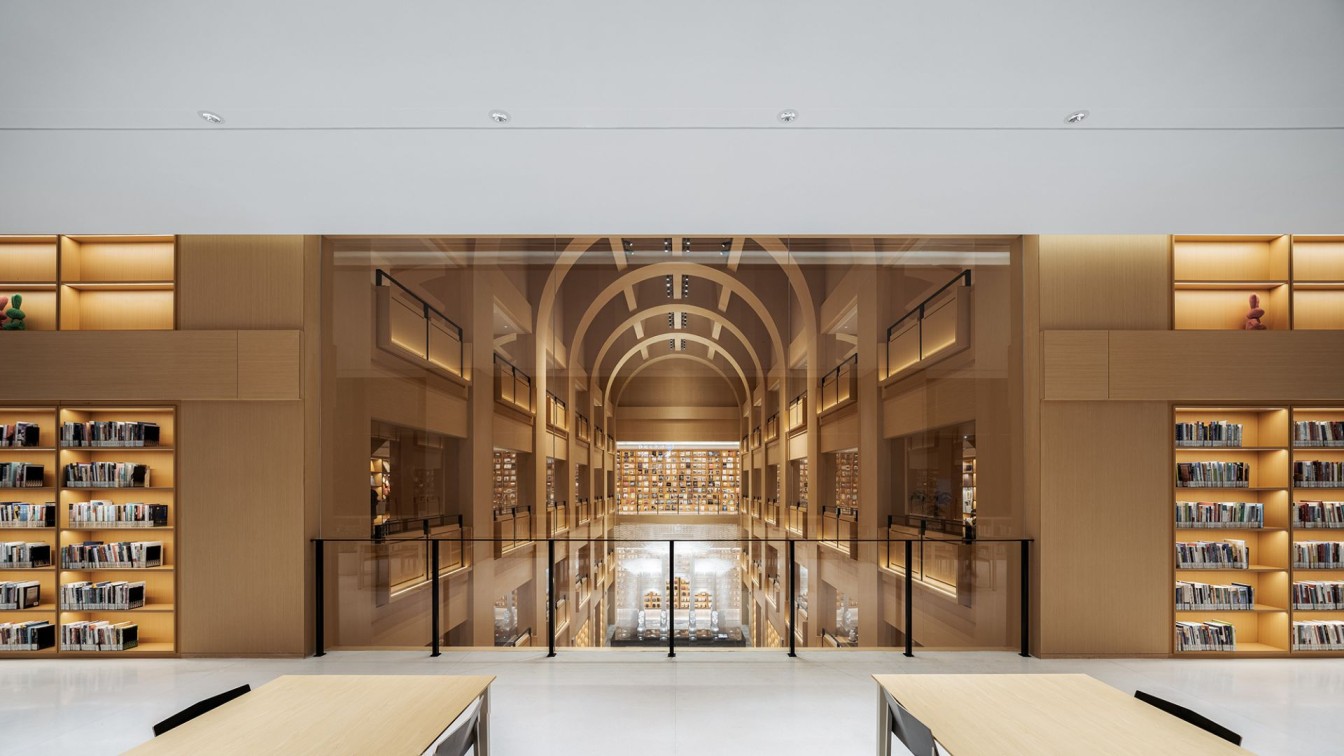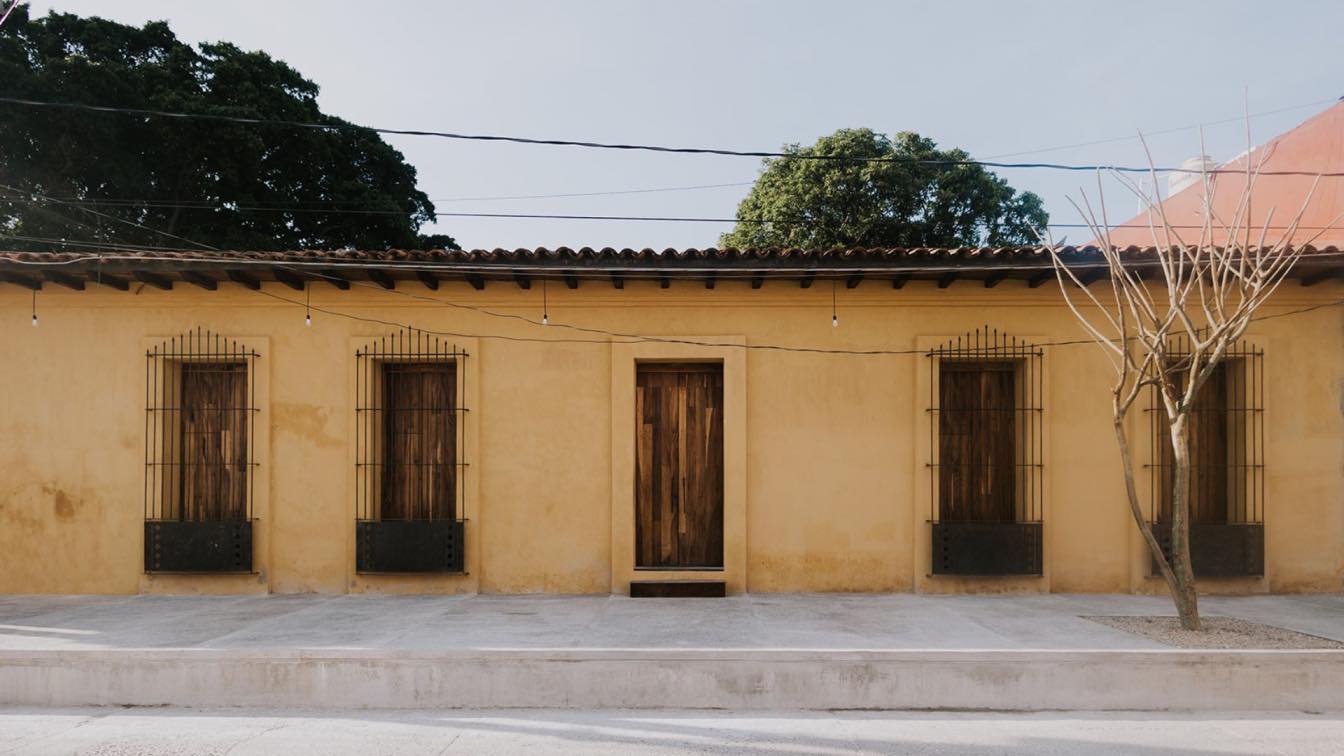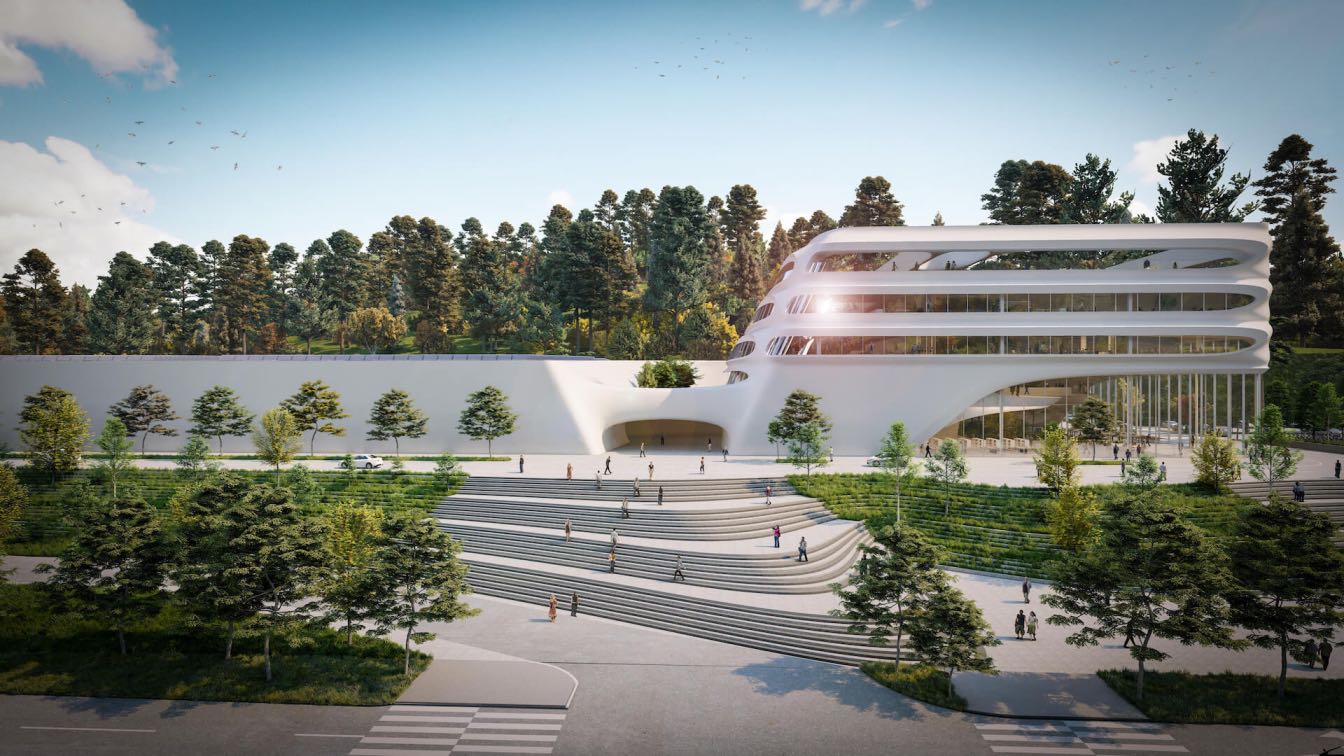Educational and Community Center
The library is situated at the intersection of routes connecting housing estates, schools, bus stops, and the polyclinic on one side, and the elementary art school and the city center on the other. It is in the immediate proximity to the town park and a major transportation artery. The newly designed public space in front of the library cultivates the corner of two busy roads and becomes a dignified entrance to the cultural cluster of Bezručova Street.
Expanding the library's capacity allows for providing facilities for seniors and parents with children in the mornings without limiting educational programs for schools. In addition to the expanded space for young readers, it now provides a safe meeting place for teenagers. "For many years, the library has been not only the center of reading in the town but also a community center for citizen meetings, informal education, and hosting various cultural and social activities. Overall, its activities significantly contribute to building civil society and creating a favorable atmosphere in the town.
In its work, it is not an island but a partner that collaborates with numerous local associations, organizations, schools, institutions, as well as individuals. Its remit extends beyond the town borders: methodically, it manages seven local libraries in the micro-region's municipalities. In the newly expanded spaces, the library opens up opportunities primarily for the dignified realization of established activities (education for children, adults, seniors, barrier-free cultural and social events), and secondarily for new activities whose implementation was previously limited by capacity and space constraints.
Adequate storage space for the library collection also changes visitors' perception and impression of the library as merely a book repository. It is above all a place where they can seek advice, find inspiration, sit down, and relax (not only) with a book in hand. After six months of operation, the number of registered users increased by nearly 20 %. By organizing a variety of cultural and educational programs for all age groups, the library has become a heavily frequented place for all town residents." (Pavel Zajíc, Library Director)

Architecture (Karel Kubza, ČTYŘSTĚN)
We came about designing the new library in Rožnov by winning an open architectural competition in 2016. Its goal was to find the most suitable solution to expand the capacity of the municipal library, as its premises in the historic villa were insufficient for educational programs and other activities that belong to a modern library.
The extension creates a transition between a completely new public space on the street corner and the garden, acting as a new entrance to the library. The roles of the extension and the villa are thus reversed. The extension becomes the new main space, meeting the requirements of a modern library with a café and lecture rooms. The villa now serves primarily adult readers - as a reading room, study room, and facilities for library administration.
As a result, the extension and the old villa have significantly different interior characters. The new building is modern and airy, opening into the garden with its glass facade. It is dedicated to new releases, children's books, a café, lectures, and workshops. Tall wooden shelves are integrated into the walls, while movable low shelves ensure the interior remains clear and adaptable to current needs. Along the glass facade are reading spots with armchairs for adults, children hide with books in nooks in the shelves, and toddlers climb in a fenced "sandbox." Thanks to the different heights of the shelves, tables and seating elements, every age group can find its place.
The interior of the villa, on the other hand, is traditional. It has a more intimate character with tall shelves in a blue-green color with reading nooks in the bay windows. It is like a maze with the atmosphere of old bookshops. In the central part, there's a new opening in the ceiling with a suspended chandelier, generously connecting the floors, bringing light into the layout, and inviting visitors upstairs. At the original entrance, a new glazed bay window provides a view of the space in front of the library. Thanks to these interventions, the house receives an entirely new quality of space - from a residential villa to a real public building.

The main material used in the interior is pine paneling, evoking traditional buildings in the foothills. In the new part, the wooden material is natural, with white and yellow accents, while in the old villa, it is painted in a striking blue-green color. The furniture and floors have a simple color palette, with the books and the bold accents of the armchairs adding colors to the interior.
An important parameter that influences the appearance of the extension is the very low energy consumption of the building. This is the basis for the combination of construction and technological elements used in the design. The green roof reduces overheating and improves rainwater retention on the site. The roof overhang passively shades the glass facade on the west side, and the glass facade itself is made of very high-quality triple glazing filled with argon. Heating and cooling are provided by a ground-to-water heat pump with three boreholes under the building. In order to cool the building with the heat pump in the summer months, the heating and cooling pipes are routed in the ceiling.
On the one hand, this allowed for absolute variability in the arrangement of furniture in the extension, but on the other hand, it required a technical approach with an exposed ceiling and the use of vertical ceiling acoustic elements - baffles. This gives the interior a certain regular rhythm, repeated in the vertical facade beams and the regular division of the shelves along the walls.
Structurally, the extension is designed as a reinforced concrete skeleton with steel columns and masonry with insulating infill. This allows the space inside the extension to flow freely and benefit from generous connections to the garden and public space.





































About studio / author
The Brno-based studio ČTYŘSTĚN is jointly led by architects Karel Kubza, Milan Joja, and Tomáš Págo. They specialize in residential and public buildings with a significant social emphasis, such as the award-winning Social Apartments in Bílovice nad Svitavou or the children's hospice House for Julia in Brno. They view architecture as a significant social discipline that can have a long-term impact not only on the residents of the designed buildings but also on their surroundings. In their projects, they seek strong connections with the place where the building stands and address contexts that transcend the boundaries of the plot and the assignment. They aim to design meaningful, timeless, and socially responsible structures that will serve well and then can be easily renovated or replaced.

